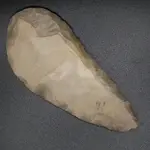Tesorodeoro
Bronze Member
- Jan 21, 2018
- 1,240
- 1,932
- Primary Interest:
- All Treasure Hunting
Is this considered a “retouched” uniface tool, or was that small flaking on the edge part of the original flaking?
I have not visited this sub-forum much in 2023.
I noticed that a particular member that always donated much of his knowledge and time here has been vacant from this forum (uniface).
I remember he spent quite a bit of time taking photos of his lifetime of collecting and sharing them here along with some information.
Always willing to answer questions or provide an opinion based on decades of learning.
A little poking around here left a few clues as to his absence. I’ll skip past my opinions on that.
Has anybody heard from uniface on other forums?
Last edited:
Upvote
1






